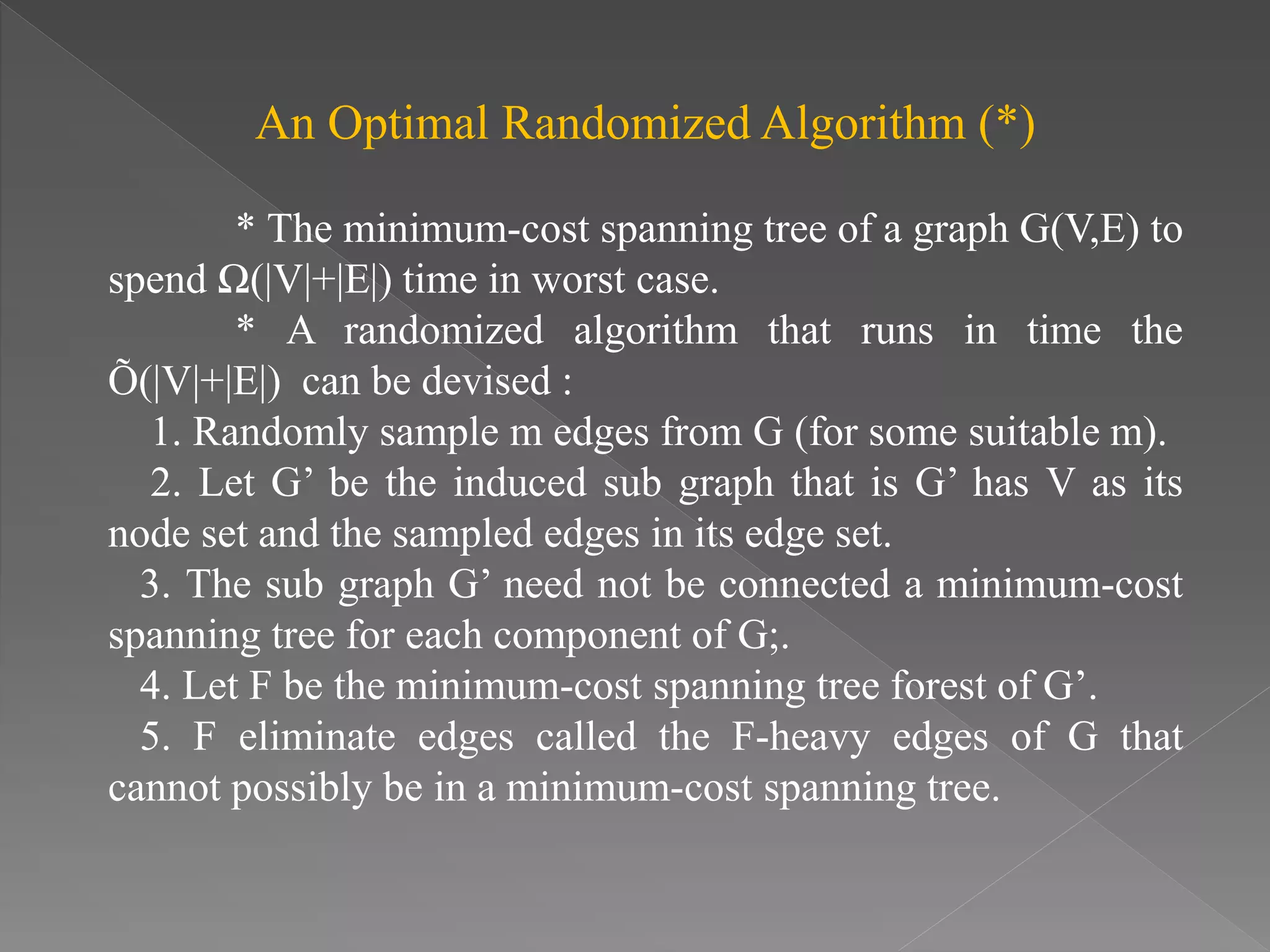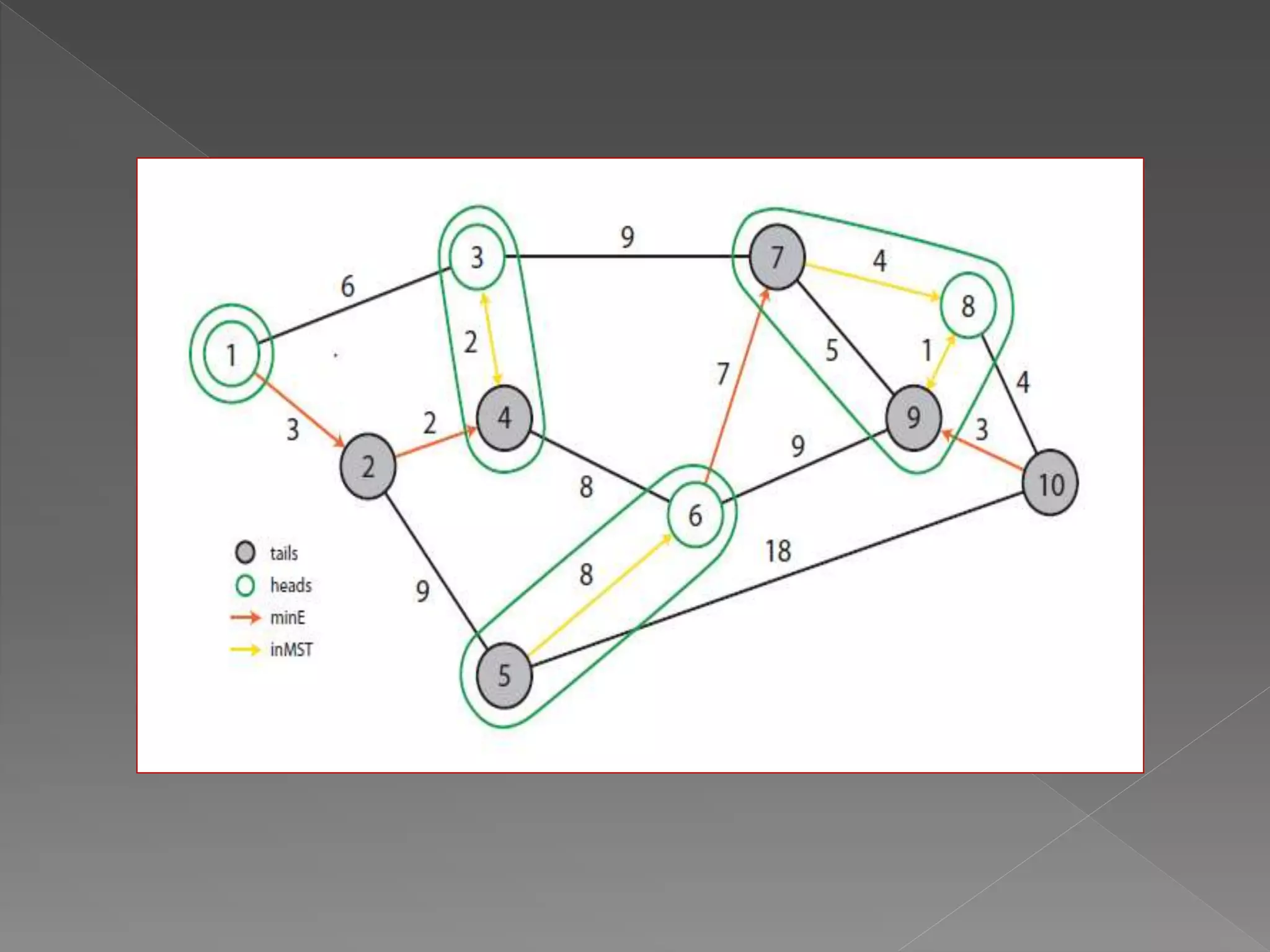The document describes three algorithms for finding minimum cost spanning trees in graphs: Prim's algorithm, Kruskal's algorithm, and an optimal randomized algorithm. Prim's algorithm finds the minimum spanning tree by building the tree edge by edge in a greedy manner. Kruskal's algorithm finds the minimum spanning tree by adding edges in order of increasing weight, skipping edges that would create cycles. The randomized algorithm samples edges from the graph randomly and finds minimum spanning trees on the induced subgraph to eliminate edges that cannot be in the optimal solution.

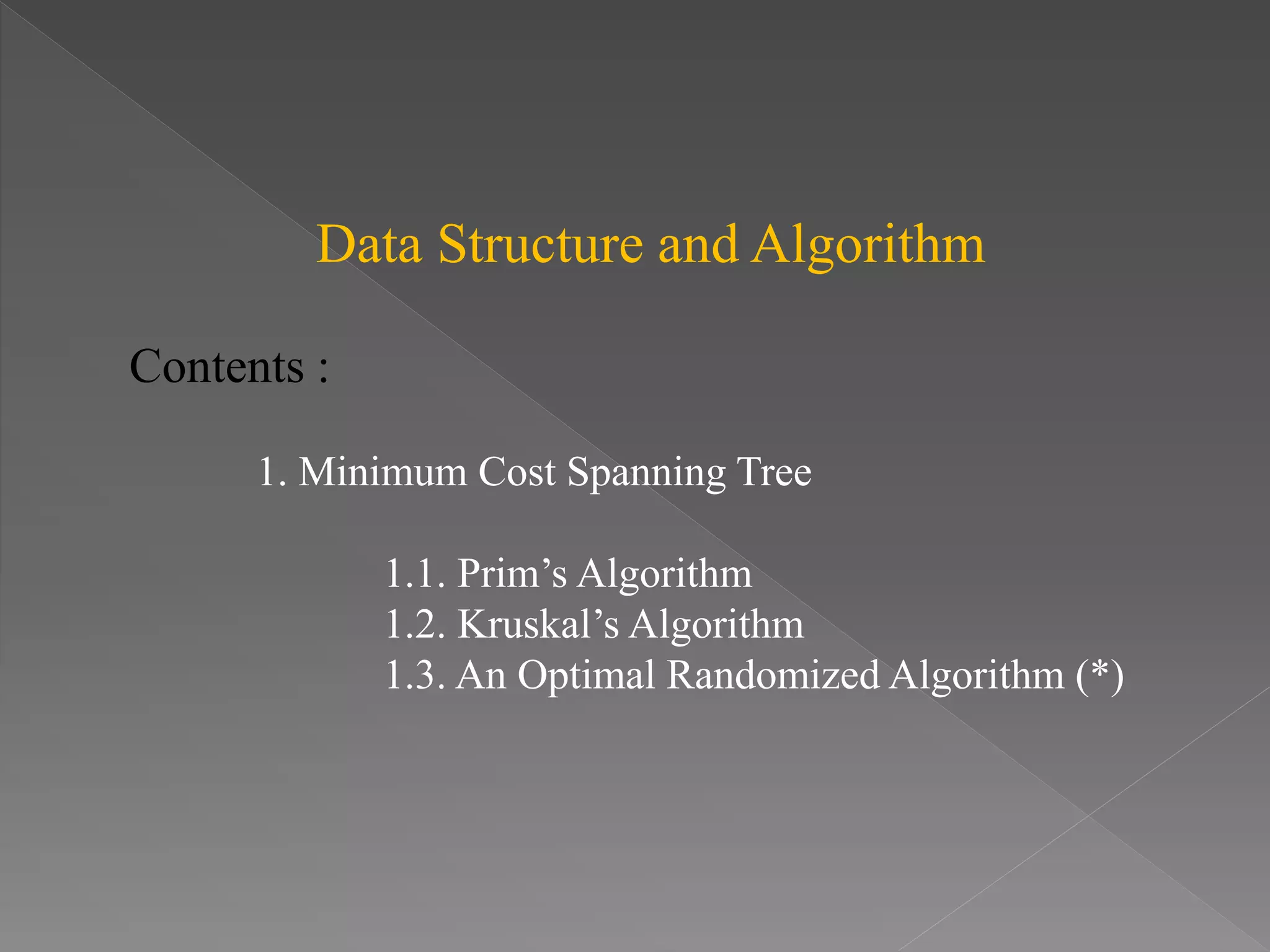
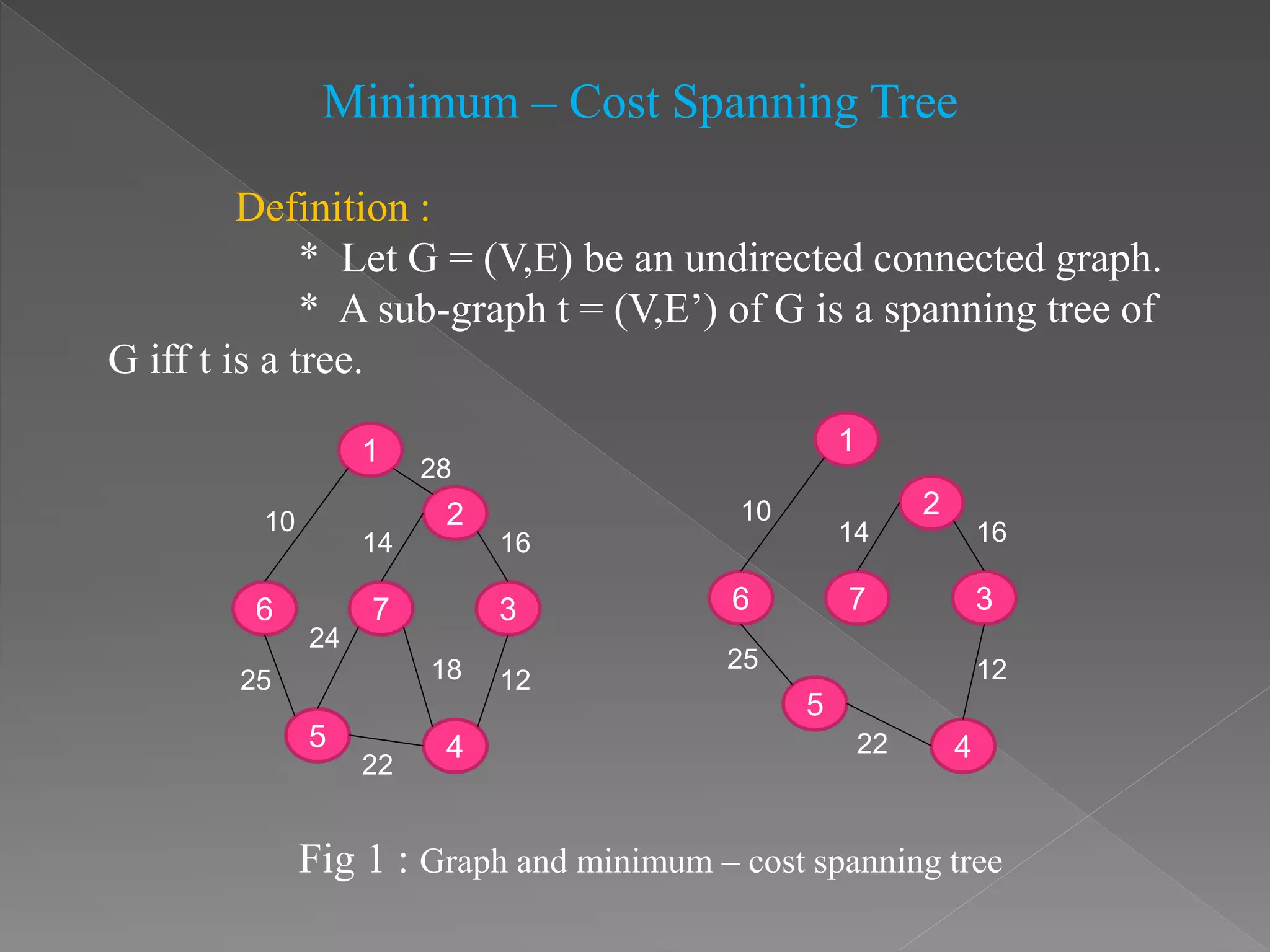



![* The algorithm is a minimum cost spanning tree
includes for each vertex v a minimum-cost edge incident to v.
* It support t is a minimum-cost spanning tree for G =
(V,E).
* These algorithms find the minimum spanning forest
in a possibly disconnected graph.
* The most basic form of Prim's algorithm only finds
minimum spanning trees in connected graphs.
mincost :=0;
for i:=2 to n do near[i]:=1;
// Vertex 1 is initially in t.
near[i]:=0;
for i:=1 to n-1 do
{
// Find n-1 edges for t.](https://image.slidesharecdn.com/datastructure-180908010919/75/Data-structure-7-2048.jpg)
![Algorithm Prim(E,cost,n,t)
{
Let(k,l) be an edge of minimum cost in E;
mincost:=cost[k,l];
t[1,1]:=k; t[1,2]:=l;
for i:=1 to n do
if (cost[i,l]<cost[i,k])then near[i]:=l;
Else near[i]:=k;
near[k]:=near[l]:=0;
for i:=2 to n-1 do {
Let j be an index such that near[j]≠0 and
cost[j,near[j]] is minimum;
t[i,1]:=j;t[i,2]:=near[j];
mincost:=mincost+cost[j,near[j]];
near[j]:=0;
for k:=1 to n do
if((near[k]≠0)and(cost[k,near[k]]>cost[k,j]))
then near[k]:=j; }
return mincost;
}
Prim’s minimum-cost
spanning tree algorithm](https://image.slidesharecdn.com/datastructure-180908010919/75/Data-structure-8-2048.jpg)
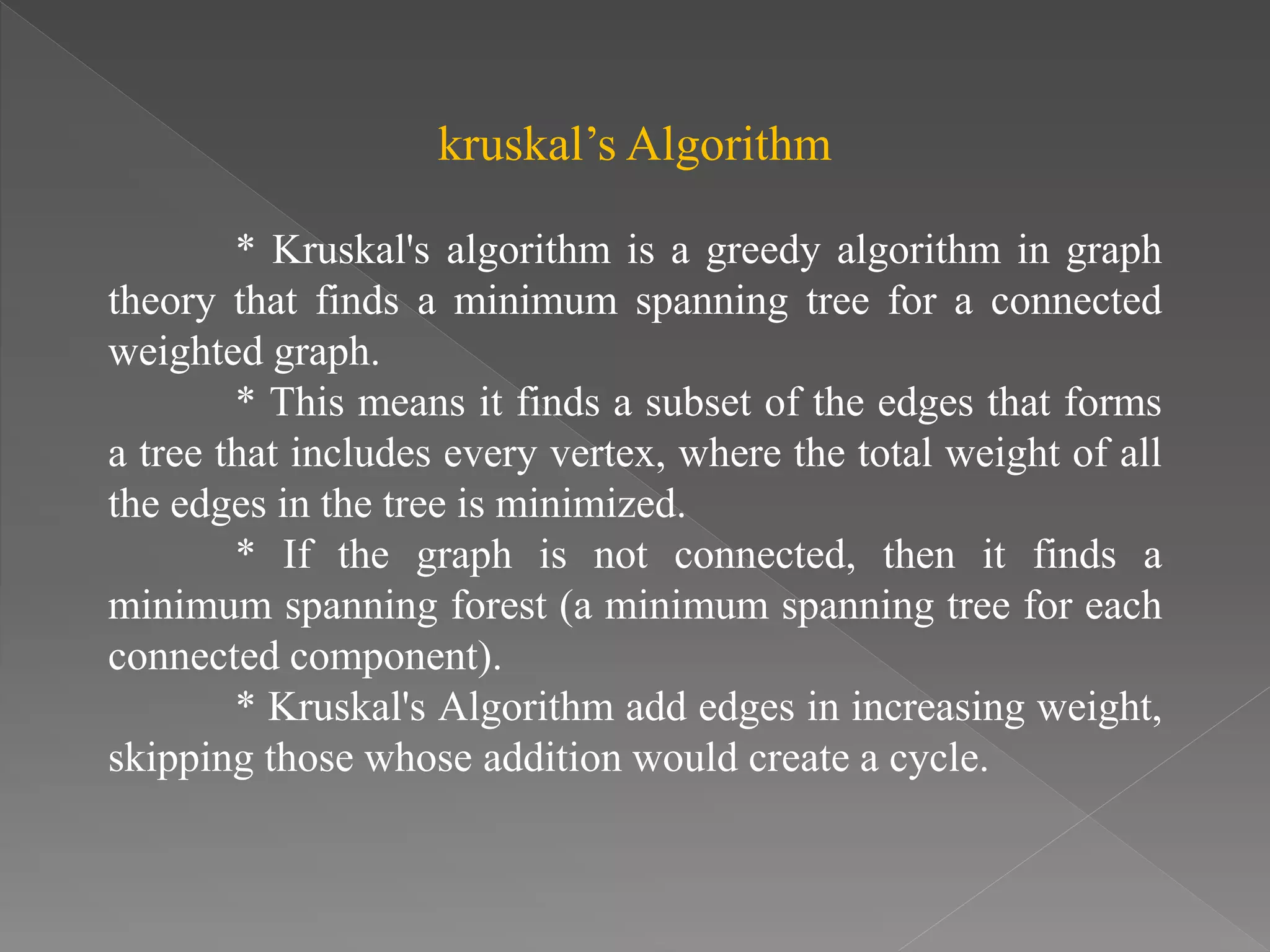
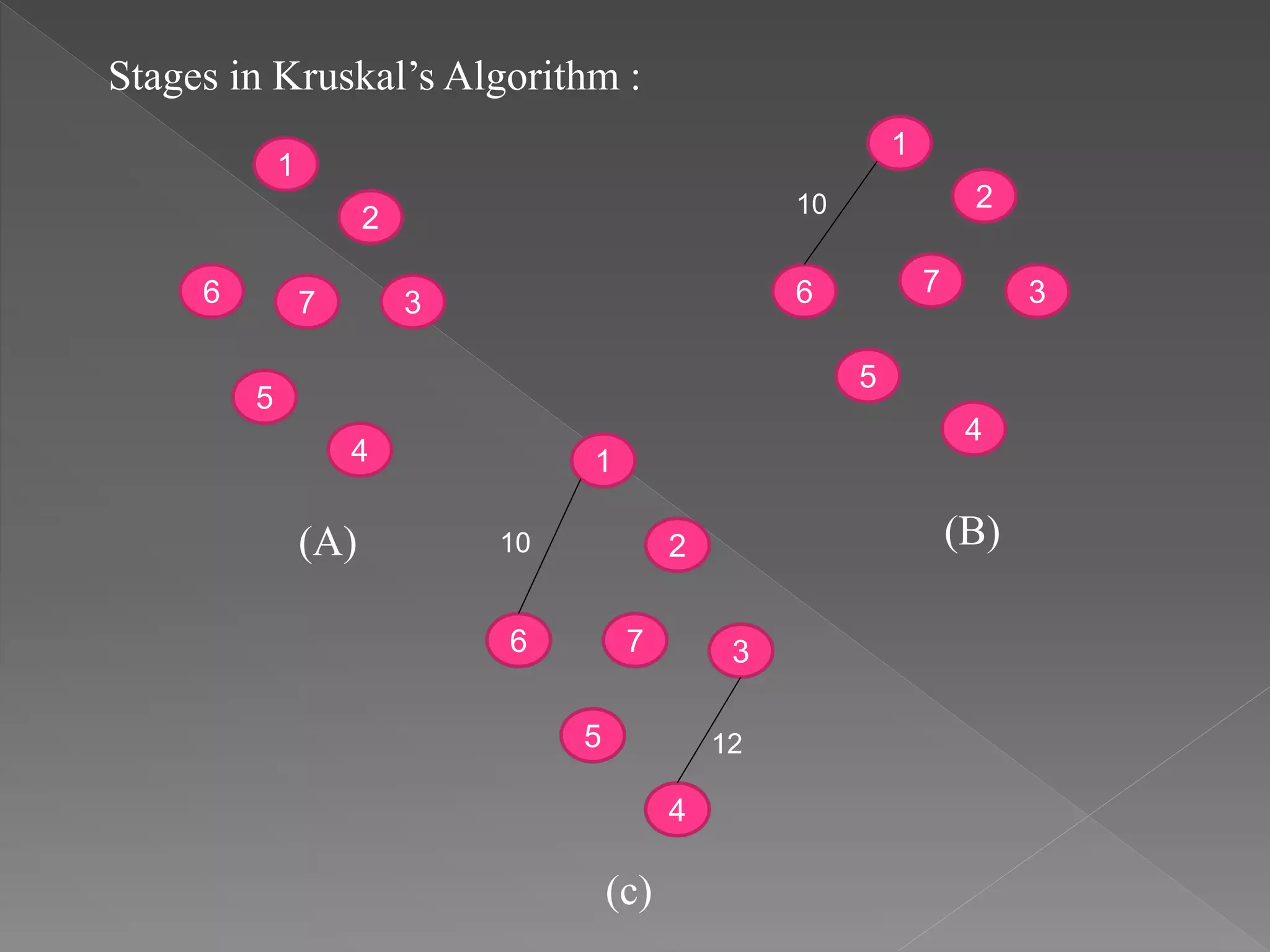
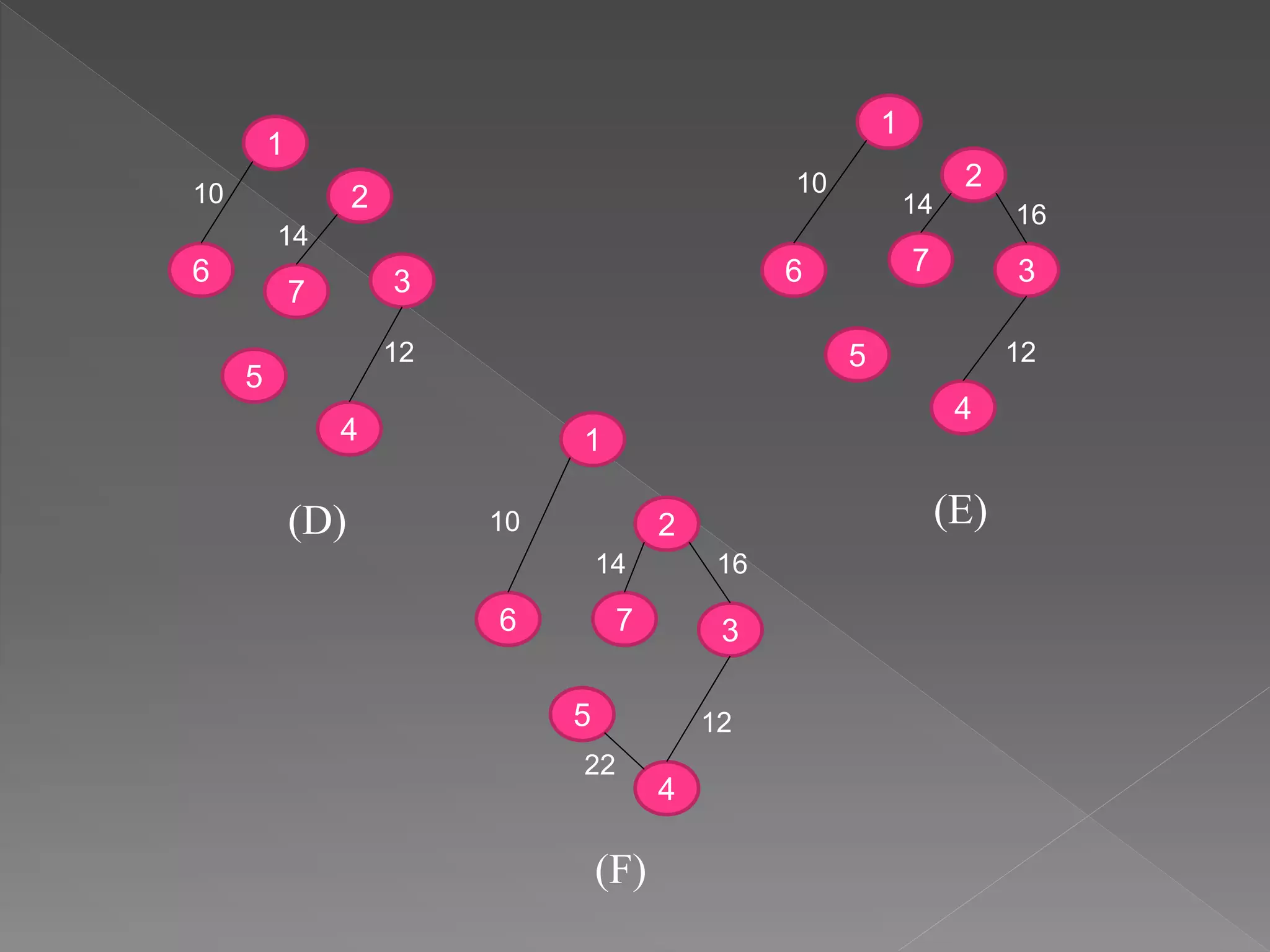
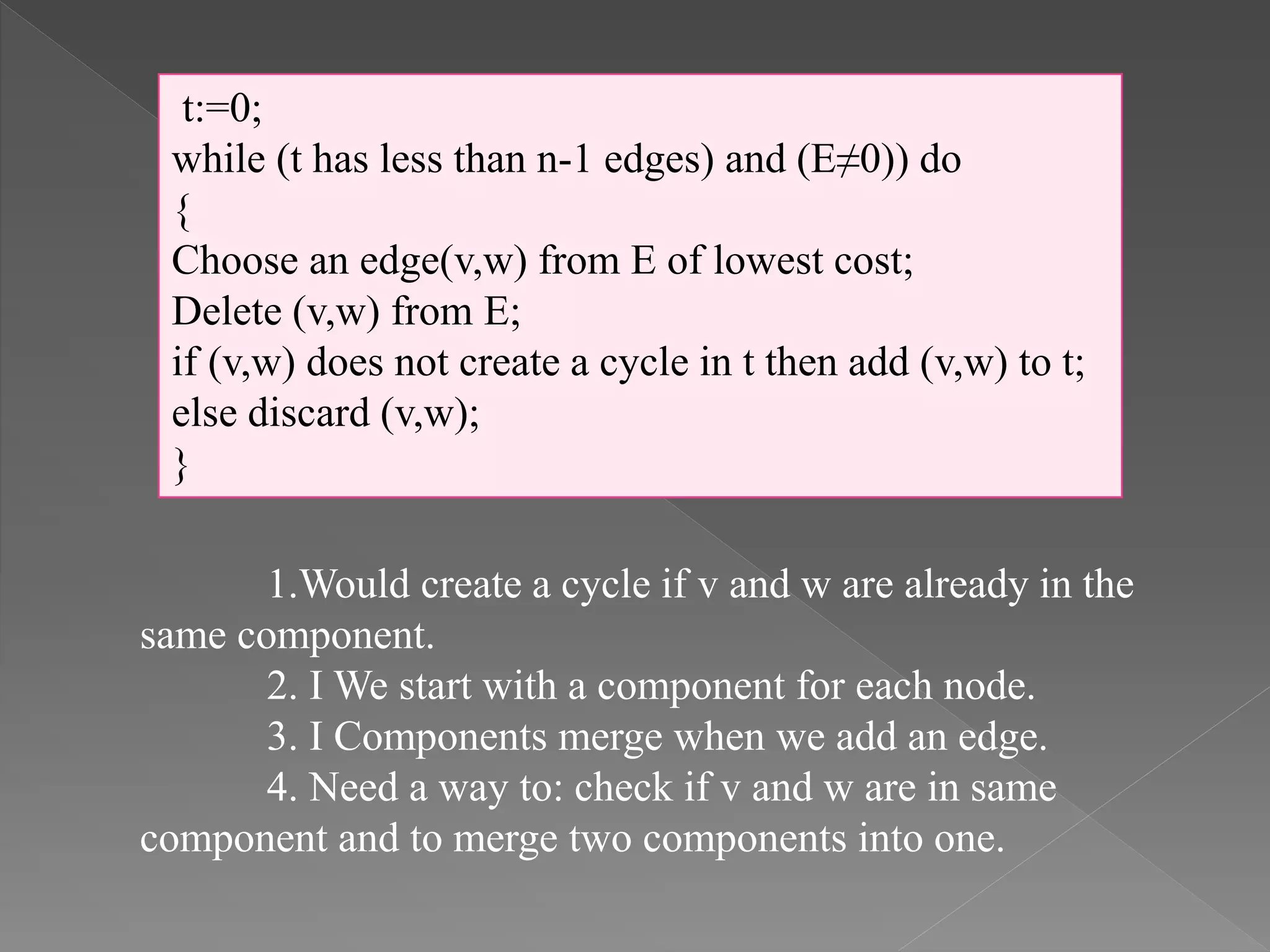
![Algorithm Kruskal(E,cost,n,t)
{
Construct a heap out of the edge costs using
Heapify;
for i:=1 to n do parent[i]:=-1;
i:=0; mincost:=0.0;
While((i<n-1) and (heap not empty)) do {
Delete a minimum cost edge (u,v) from the
heap and reheapify using Adjust;
j:=Find(u);k:=Find(v);
if(j≠k) then {
i:=i+1;
t[i,1]:=u;t[i,2]:=v;
mincost:=mincost+cost[u,v];
Union(j,k);
} }
if(i≠n-1) then write(“No spanning tree”);
else return mincost;
}
Kruskal’s Algorithm](https://image.slidesharecdn.com/datastructure-180908010919/75/Data-structure-13-2048.jpg)
